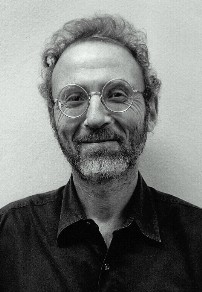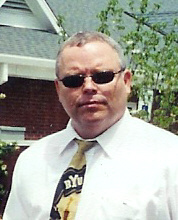|
|
|
|

An interview with Sy Safransky
"One does not become enlightened by imagining figures of light, but by making the darkness conscious." -- C.G. Jung For nearly 30 years Sy Safransky has made the darkness conscious in his unique and powerful publication The Sun. Throughout the years of struggle with the magazine, Safransky has had his own share of challenges and dark moments. "When I started the magazine I toyed with the idea of calling it The Sometimes Sunshine," Safransky quipped. "It seemed more descriptive of my sometimes melancholic nature. "But now I can't imagine it being called anything but The Sun." He is not so keen on defining his publication. "If you read someone a poem you've written, you don't want to be asked, 'What does it mean?' You want the poem to stand on its own. I feel that way about The Sun. I don't like to label The Sun as 'literary' or 'political' or 'spiritual' because it ends where those labels begin, which is where life gets interesting." Not everyone is prepared for the stark reality in The Sun with its often poignant writing and haunting black and white photographs. Here is an example from one reader, Barbara L. Finch: "Sarah and I stand on either side of the bed, rubbing Mother's arms and talking softly to her. She is so thin I can wrap my thumb and middle finger around her biceps. The skin of her forearm is dry and wrinkled, and reminds me of a chicken leg left too long in the refrigerator. Her bony shoulder is hard, cool and smooth to the touch, like a marble statue. I'm struck by the fact that I have seen and touched more of Mother's body in the past few days than in the previous five decades." In a telephone interview from his office in Chapel Hill, Safransky acknowledges that "some people have a hard time dealing with the content, but that's understandable. Not everyone is ready to confront the same hard truths in the same way at the same time." East West Journal says "The Sun gently opens the heart, soothes troubled feelings, and probes matters of the spirit with a clear and grounded intelligence . . . . The whole magazine is like an intelligent compassionate friend who perceptively articulates your innermost thoughts and dreams." Utne Reader awarded Safransky's publication its Alternative Press Award, calling it "a magazine completely unlike any other, always personal, always meaningful, always unexpected." The conversation with Safransky was also unexpected. A one-time New York City newspaper reporter, the editor of this "serious" magazine did not take himself that way. He was articulate, witty and often humorous. He spoke of his Russian grandmother, his two daughters, and his marriage of nearly twenty years to his third wife, Norma, "a strong woman who provides a healthy balance to my own well-developed woman within." At fifty-eight, he's ten years older than his wife, but jokes that "men have a better chance with women if there's an age difference, since boys are less mature than girls." In any event, he says, he tries to remember the advice of a friend: "A happy wife is a happy life." He still believes in the importance of honoring sadness, he said, but "just feeling sad doesn't necessarily open our hearts or make us more compassionate - especially if it's the kind of sadness that comes from denying, rather than embracing, the pain of living." The monthly magazine began in 1974 when Safransky peddled the first issues for twenty-five cents on the streets of Chapel Hill, North Carolina. In Issue 31 he began the first "Readers Write" Section, in which readers are invited "to write in each month on such topics as Whirlwind Romances, Locked Doors, Begging, or Hair. What results, in the words of one reviewer, is 'often exciting, always heartening, sometimes as shocking as words overheard in a church confessional.'" Safransky writes this at his website www.thesunmagazine.org
"Unfortunately, you're not likely to find The Sun at your regular newsstand. Many distributors won't carry it because it's not 'commercial' enough: we don't carry advertising; and we regularly print pieces that are too risky, too personal, too sad, too something. Yet somehow the magazine finds its way into the right hands; readers who appreciate writing that doesn't talk down to them or up to them, but meets their level gaze." The Sun's 48 pages are filled with interviews, essays, fiction, poetry, photography, and letters to the editor. And there's no advertising. "I'm not against advertising," Safransky said. "But if you and I are sitting together and talking seriously, isn't it preferable not to have to pause for a commercial break? In The Sun, I try hard to create a mood with words and pictures, and I don't want to have that ruined, when the reader turns the page, by an ad for a better beanburger." The Sun readership was steady at around 1,000 for the first 10 years. Now it's up around 55,000 nationwide. Safransky said he used to be ambivalent about The Sun's growth. "I was committed to the magazine's survival but not to its success," he said. "I equated success with compromise. But I've found, instead, that The Sun's modest success has enhanced rather than compromised our ability to do what we're doing. It's great not to worry about paying the bills every month but to focus instead on making each issue as good as it can be." Although three times as many women as men read The Sun, the editor was reluctant to generalize about gender differences. You asked me if men are afraid of women," he said. "Sure. And it's also true that woman are afraid of men. In fact, just about anything you can say about gender is true from a certain perspective." He said a spiritual teacher named Patricia Sun (no relation) "turns the conventional stereotypes around. She thinks men are more inherently emotional but cover it up with a veneer of the rational. And, women are rational but cover it up by seeming to be emotional." When pressed again on gender differences. Safransky retorted, "Why should relationships between the sexes be any more peaceful than anything else in the world? We live in a world of conflict." He is also reluctant to generalize about creativity. "People who love language are tempted to make judgments about men who don't," Safransky noted. "But just because someone has never written a poem or won't even read poetry doesn't mean he's any less wise or loving than someone who looks to literature for answers. Words only point the way." The Sun, 107 North Roberson St., .Chapel Hill, NC 27516. Subscriptions: 888.732.6736; Editorial Office: 919.942.5282 © 2005 Reid Baer The fame you earn has a different taste from the fame that is forced upon you. - Gloria Vanderbilt Reid Baer, an
award-winning playwright for “A Lyon’s
Tale” is also a newspaper journalist, a poet
with more than 100 poems in magazines world wide,
and a novelist with his first book released this
month entitled Kill
The Story. Baer has been
a member of The ManKind Project since 1995 and
currently edits The New Warrior Journal for
The ManKind Project www.mkp.org
Menstuff® Directory Menstuff® is a registered trademark of Gordon Clay ©1996-2023, Gordon Clay |
